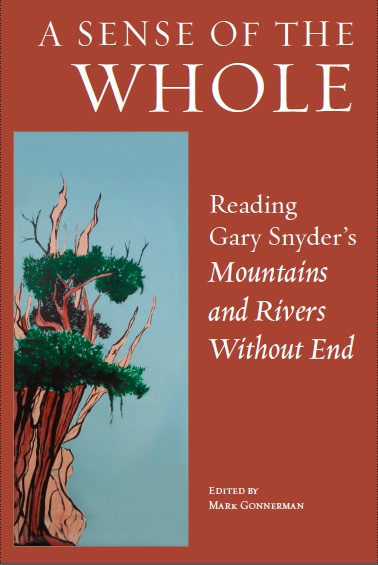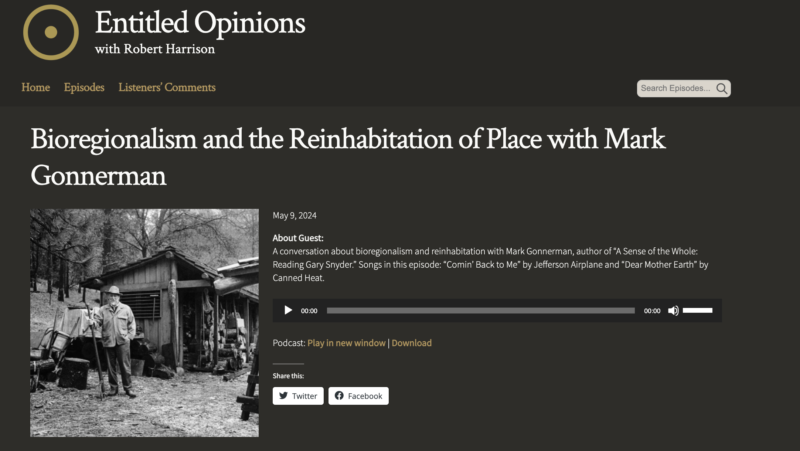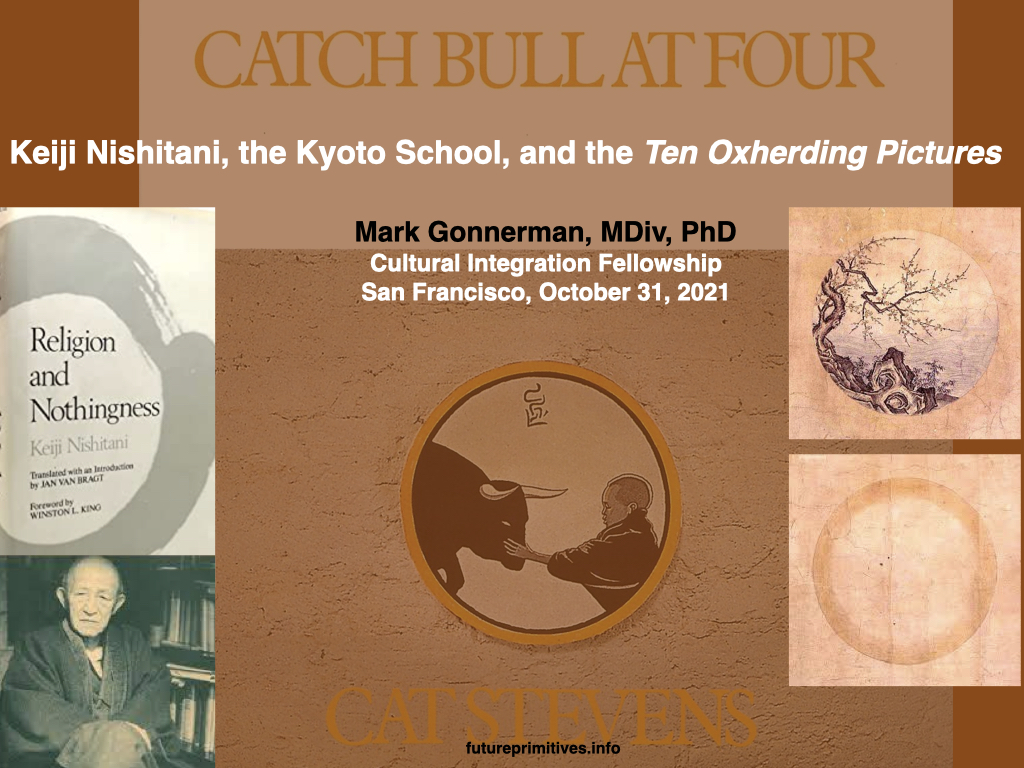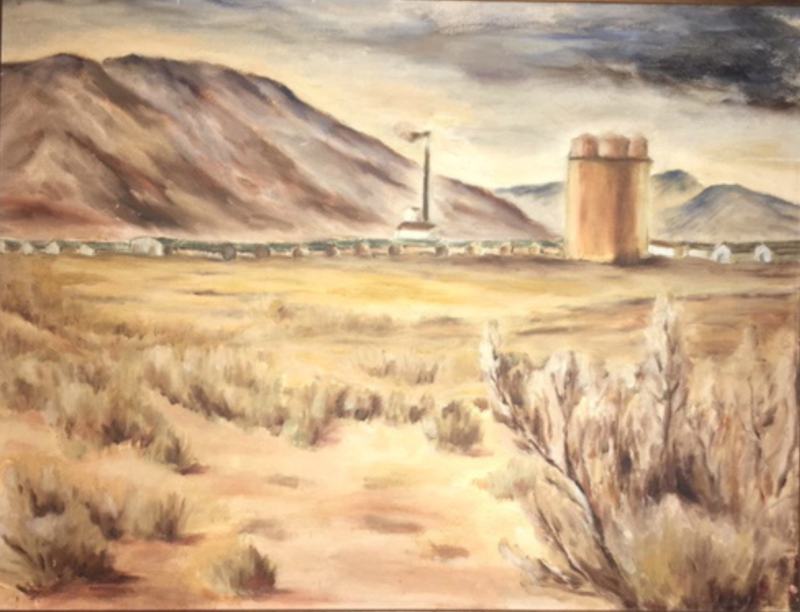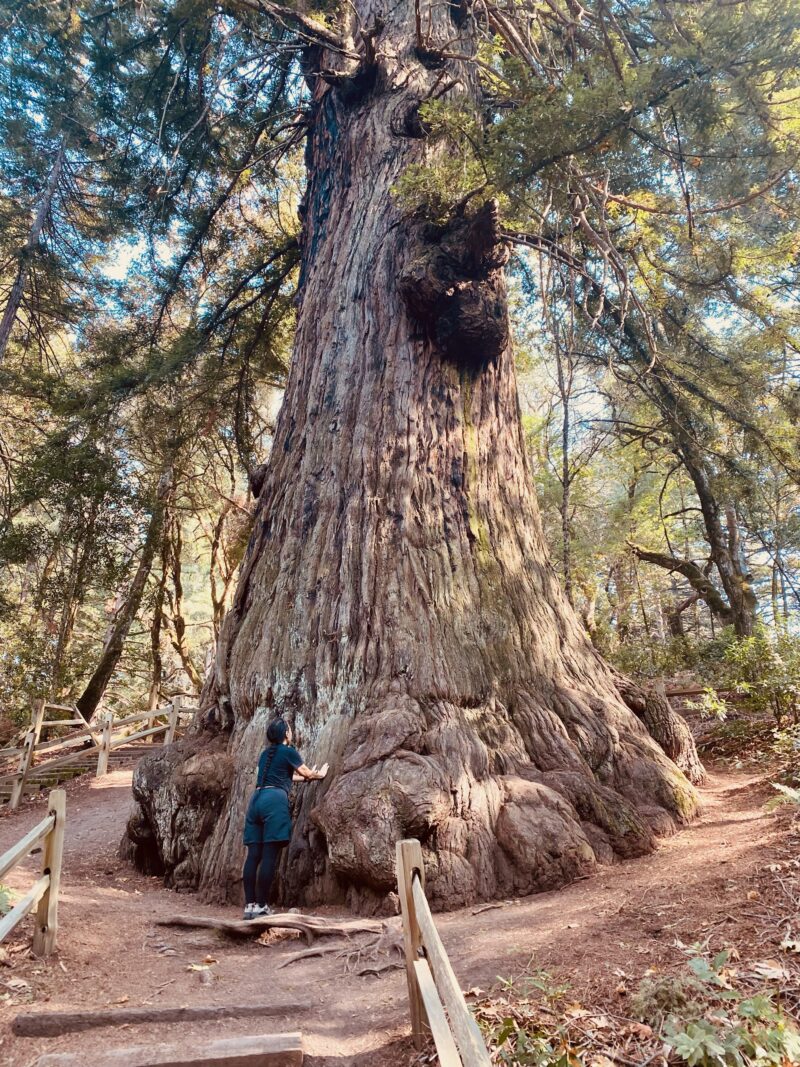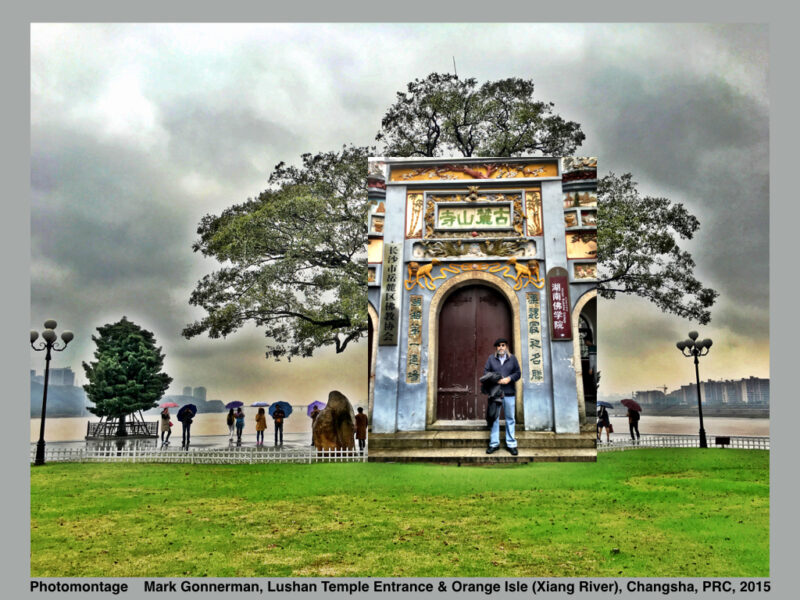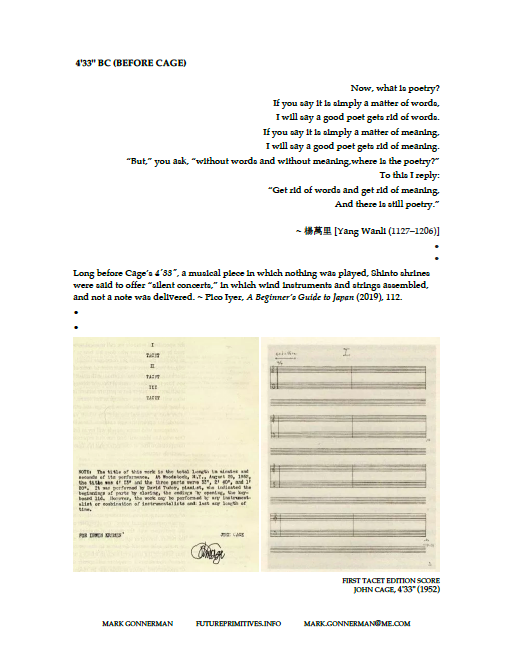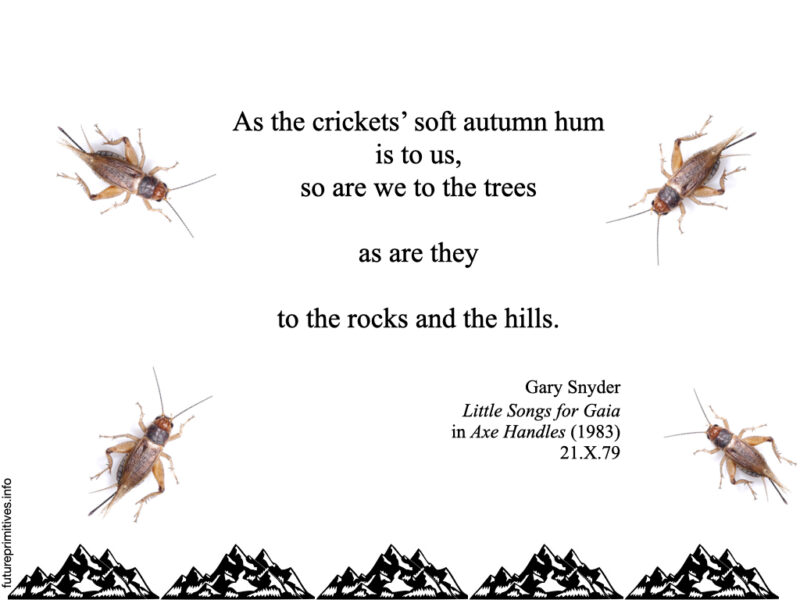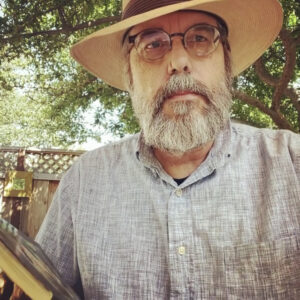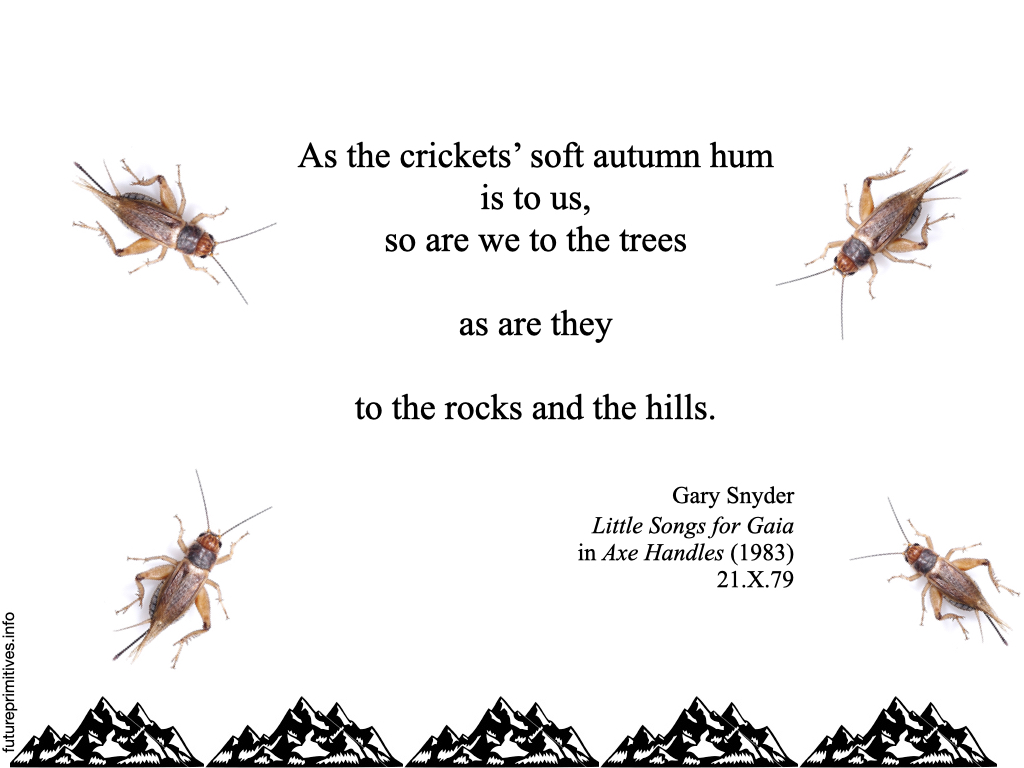Posted on the day after Gary Snyder’s 94th birthday, my conversation on bioregional thinking, Turtle Island, Boasian anthropology, Alfred Kroeber, Native Californians, place names, origins of the Grateful Dead, and Ursula K. Le Guin has posted on Entitled Opinions.
Turtle Island at 50
The name Turtle Island (the old/new name for our continent) is used today by many Native North Americans, Native rights advocates, and environmental activists. The term came into wider usage in the 1970s, especially through Gary Snyder’s Pulitzer Prize-winning collection of poems under that title. He argues that viewing North America under the name of Turtle Island will help shift conceptions of the continent and promote “reinhabitation,” “bioregional thinking,” and the work of understanding and living on the land with greater awareness of harms that have been done and of choices we must make if we are to dwell more harmoniously with the more-than-human world of which we are but a part.
For further reading see:
Gary Snyder, “Reinhabitation” Manoa 25/1 (2013 [1976]): 44–48. [link to PDF]
A Sense of the Whole at Recycle Bookstore
I knew that eventually I would come across A Sense of the Whole at a used bookstore. And here it is at Recycle Bookstore on The Alameda in San José! And it’s right next to Mountains and Rivers Without End, right where it belongs. When I returned a month later, both were gone.
Also on that shelf you’ll find Alan Soldofsky’s In the Buddha Factory. Here’s a link to a review by Gary Singh.
Keiji Nishitani and “The Japanese Art of Arranged Flowers” (1953)
I recently gave a talk at the Cultural Integration Fellowship in San Francisco where I introduced the work of Keiji Nishitani (1900–1990) to a congenial and informed community of people interested in comparative and cross-cultural studies in philosophy, religion, cultural psychology, and the arts.
While working on this, I became aware of an essay by Nishitani on the character of beauty in ikebana (生け花), “The Japanese Art of Arranged Flowers,” where the philosopher writes:
First of all, the beauty expressed in ikebana is created to last only for a short time. Such art changes with the season and reveals its beauty only for the few days after the flowers and branches have been cut. It is, by its very nature, something temporary and improvised. The essential beauty lies precisely in its being transitory and timely. It is a beauty which embraces time, a beauty which appears out of the impermanency of time itself. People who arrange flowers understand this. The pleasure found in creating such beauty might even be in proportion to its temporal character.
It proved difficult to track down the translation by Jeff Shore that appeared in the Chanoyu Quarterly 60 (1989): 7–16. Eventually I found a reprint of this in a book, World Philosophy (1995), but that too is not easy to find, but for the Internet Archive!
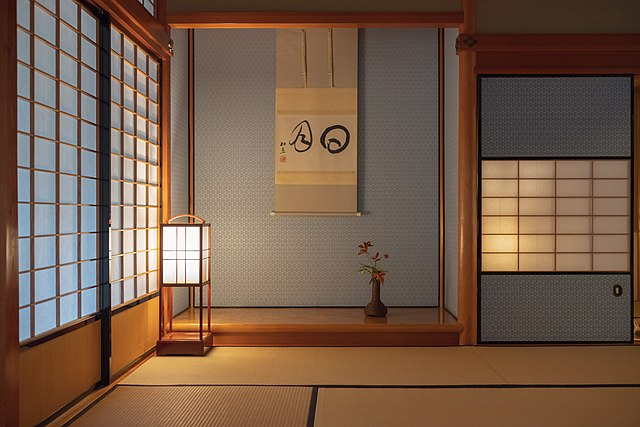
“Untitled, by Saburo Tamura,” a Topaz Story by Meri Mitsuyoshi
In her recent contribution to the Topaz Stories project that publishes narratives by survivors of the WWII concentration camp for Americans of Japanese descent, Meri Mitsuyoshi writes about an artwork by her maternal grandfather, Saburo Tamura (1899–1998), who studied painting with Chiura Obata (1885–1975) while unjustly incarcerated in a Utah desert in the years 1942–1945.
Meri’s essay begins:
Over three decades ago, I made my first pilgrimage to Topaz—the site of the internment camp in Utah where my grandparents and their families lived during WWII. There was little evidence of what the War Relocation Authority build there forty-plus years before, but standing amid the barrack foundation fragments, I was stunned by a sense of recognition. In the distance rose the outline of a mountain that was present throughout my childhood.
Please go to the Topaz Stories website and continue reading.
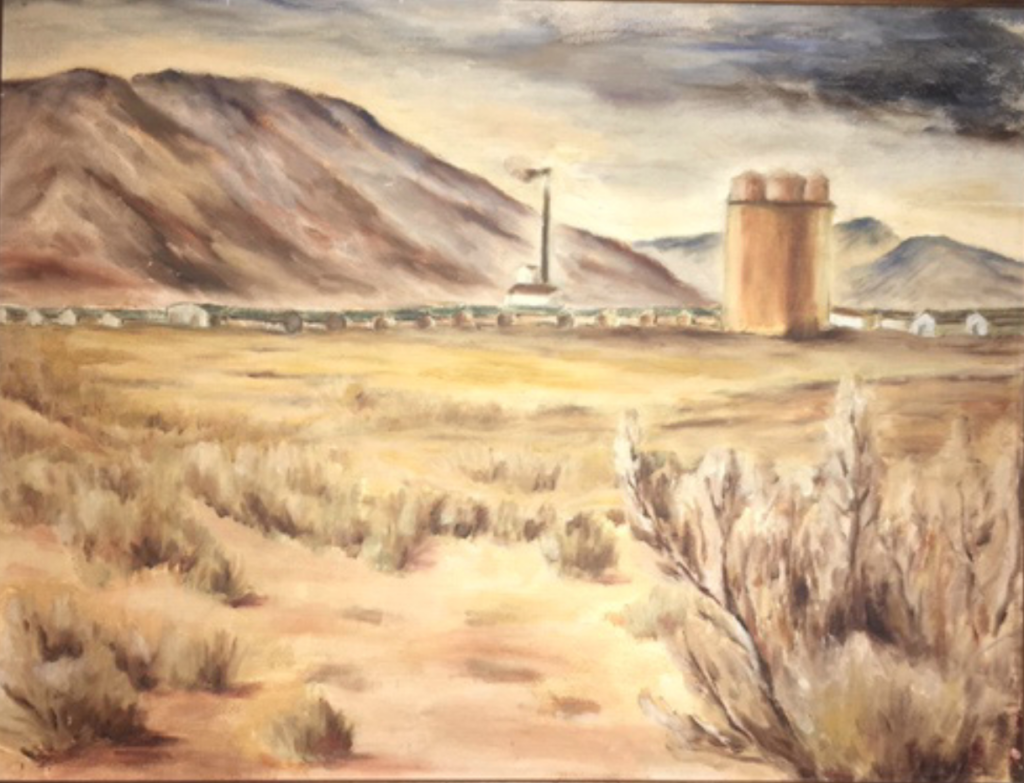
In This Present Moment: New Poems (2015), Gary Snyder includes “Chiura Obata’s Moon.” In a 2011 interview, he also talks about an experience of recognition where art and life intersect:
Walking along a highway in North Lake Tahoe and seeing a new crescent moon coming out just at dusk and dropping into a little common roadside place to eat and then coming back out and seeing that moon again and realizing it looks exactly like his woodblock from Yosemite in 1930. So I’m sort of celebrating the recognition of him and also the recognition that the moon comes up regardless of what else is going on.

See This Present Moment, page 24, for Gary’s poem.
Methuselah!
Tom Killion’s Giant Sequoias postcard slid through our mail slot today. It announces two upcoming opportunities to appreciate in person one of the Bay Area’s truly great artists. Tom is a consummate craftsperson whose work celebrates the abundant, overflowing, vibrant life that is the more-than-human world that makes us possible.
Do you see how the sequoias here are dancing?
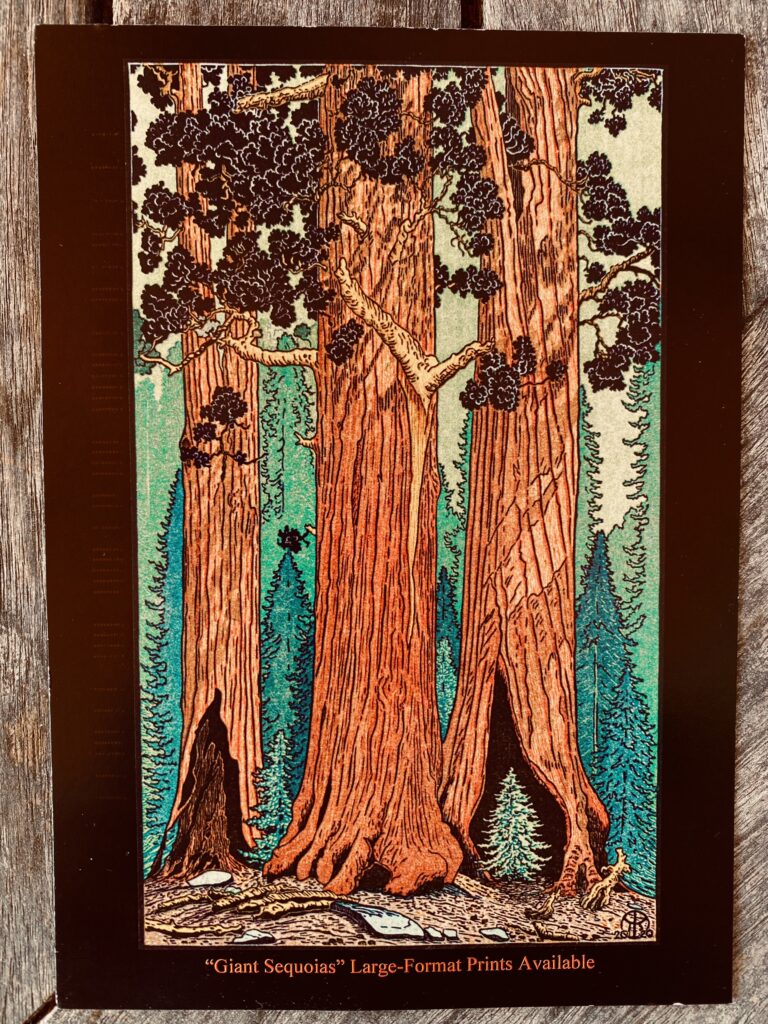
Yesterday, Meri Mitsuyoshi and I visited Methusaleh, the 1800 year-old, old-growth redwood who so graciously reigns in the realm of the Santa Cruz Mountains where, coincidentally, Killion got his start as a fine-art printmaker while studying letterpress printing with Jack Stauffacher (1920–2017) and poet William Everson (aka Brother Antonius [1912–1994]) while an undergraduate at UCSC in the mid-1970s. As many readers here know, Tom has also produced three stunning word-and-image books with Gary Snyder: The High Sierra of California (2002); Tamalpais Walking (2002); and The Wild Coast of California (2020).
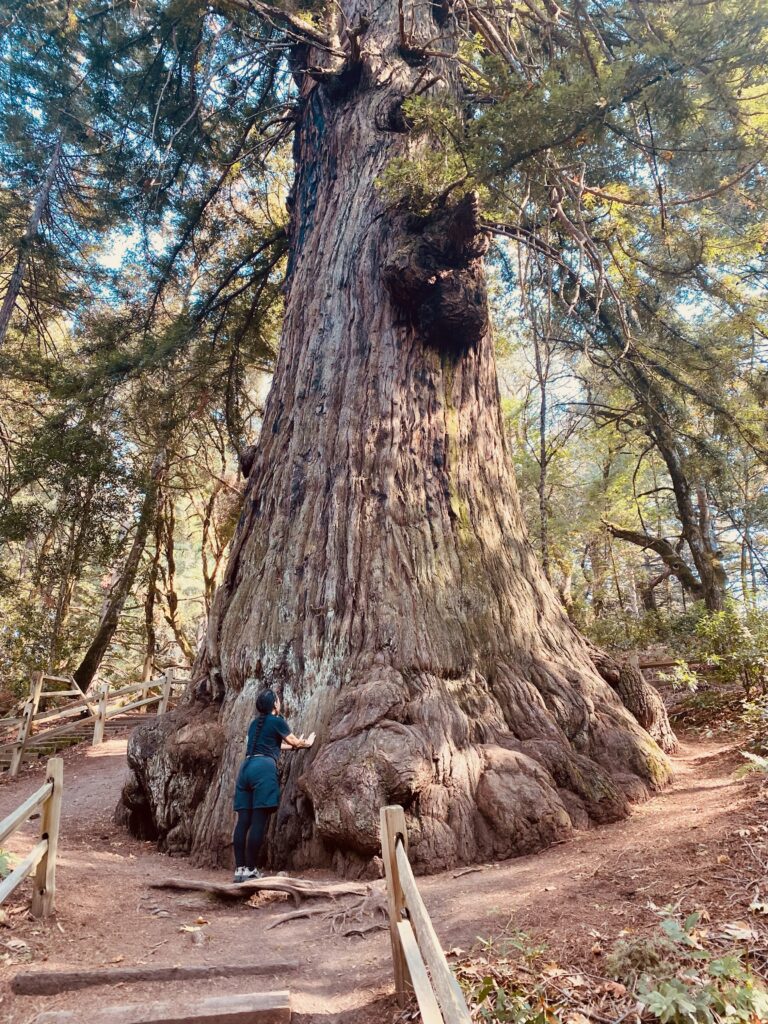
Finding this, the largest redwood in the Santa Cruz mountains, was not as straightforward as we thought it would be, but once we were on the right side of Skyline Boulevard we felt the hushed and magnificent presence of this Old Being. It was an unexpected encounter with this elder that inspired Richard Powers to research and imagine the book that is The Overstory (2018), introduced elsewhere on this site.
Go here to flip through the story of this Methuselah (217 CE – ), prepared by the caretakers who are the Peninsula Open Space Trust. An even older Methuselah with a germination date of 2833 BCE lives within the Ancient Bristlecone Pine Forest in the White Mountains, but the precise location of this—the world’s oldest non-clonal living being—is kept secret.
In the Book of Genesis, it is said that Methuselah lived 969 years, which claim is mainly a way to speed up the plot between the story of Adam and that of Noah, the tenth and last of the antediluvian patriarchs in that lineage. For a moment I wondered if selah in the name of Noah’s grandfather (מְתוּשֶׁ֔לַח) was the same word one finds sprinkled throughout the Psalms (סֶלָה), but it is not. While the meaning of this word in the Psalms is unclear, some scholars consider it a kind of instruction to pause and reflect on the majesty of Creation. It is a happy coincidence that the transliteration of the two words in English is the same, for venerable Old Beings ought to stop us in our tracks and give us pause.
In a prior post I wrote that Lushan Temple (麓山寺) on Mt. Yuelu to the east of Hunan University in Changsha was established in 268 CE. So the ancestor in the Santa Cruz Mountains depicted above is only a half-century older than that temple. Why so often do we forget (Powers’ Overstory a reminder as well) that we are all just passing through?
Selah.
Photomontage: Mark Gonnerman, Lushan Temple Entrance, and the Xiang River in Changsha, PRC
A photomontage showing Mark Gonnerman in front of the entrance to Lushan Temple on Yuelu Mountain behind Hunan University and on Orange Island in the Xiang River that runs through Changsha. Lushan Temple (麓山寺) was founded as the Hui Guangming Temple (慧光明寺) in 268 CE. I went there as a visiting professor to lecture and teach courses on the Beats and on Thoreau at the Center for Gary Snyder Studies at Hunan University in 2015, 2016, and 2017.
4’33” BC (Before Cage)
Poem by Wang Yangli
and
Shinto Silent Concerts Before Cage
CLICK IMAGE BELOW FOR LEGIBLE PDF
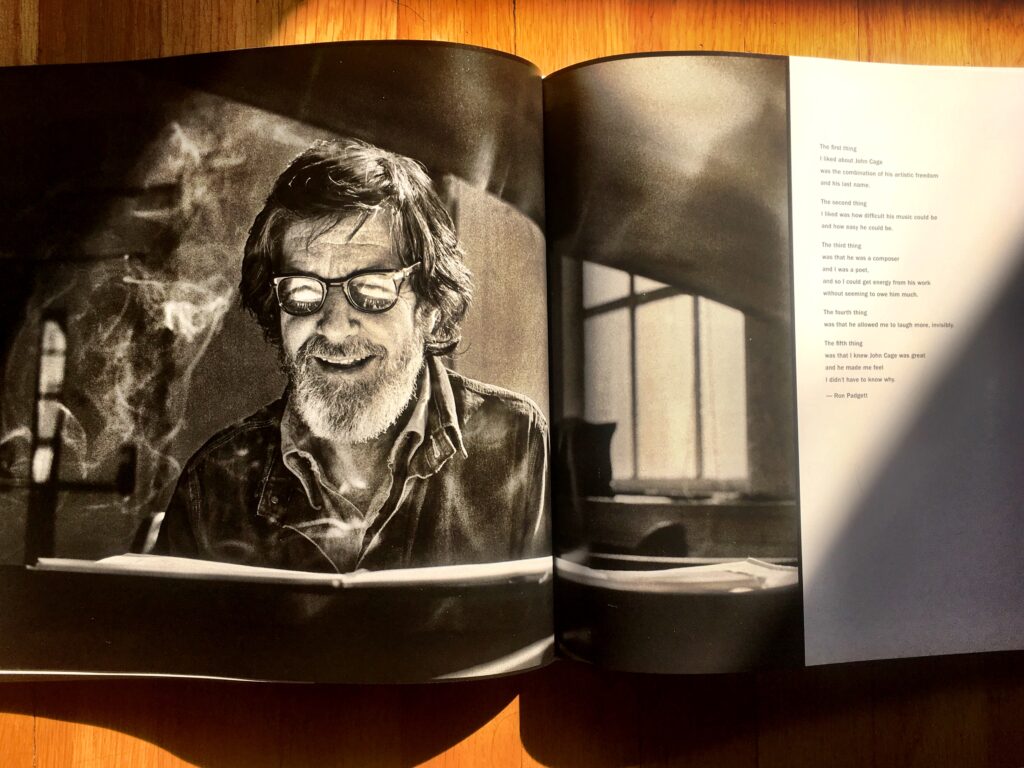
For a discussion of John Cage and Gary Snyder’s affinities, see Peter Jaeger, John Cage and Buddhist Ecopoetics (Bloomsbury, 2013), 60–64; 150–51.
Happy reBirthday, Gary Snyder!
Happy Ninetieth Birthday, Gary!
Link here to the video:
Gary Snyder 90 Birthday Reading from “Little Songs for Gaia”
